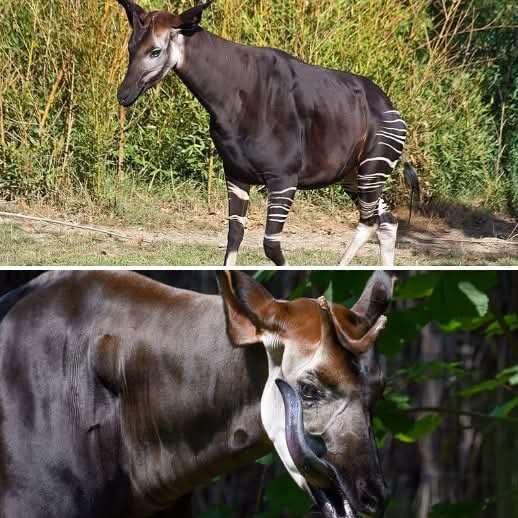Anarko on Nostr: 🌊 SURF 'N TURF 🏝️ -THE BITCOIN BORACAY ISLAND LIFE- ...
🌊 SURF 'N TURF 🏝️
-THE BITCOIN BORACAY ISLAND LIFE-

The okapi (Okapia johnstoni) is one of the most fascinating and mysterious creatures of the African jungle.
Often described as a blend of a giraffe, a zebra, and a horse, this mammal actually belongs to the giraffe family (Giraffidae), making it the closest living relative of the giraffe. Its natural habitat is exclusively found in the Democratic Republic of the Congo, where it inhabits the dense rainforests of the country’s northeast, particularly in the Okapi Wildlife Reserve, a UNESCO World Heritage site.
Its unique appearance combines an elongated head with large, mobile ears, similar to those of a giraffe, allowing it to detect sounds from great distances.
Its neck, though shorter than that of a giraffe, retains the same elongated bone structure. Its legs are decorated with black-and-white stripes, giving it a "zebra pajama" look—an excellent camouflage to blend into the dense vegetation.
Its body is robust and muscular, resembling that of a horse, while its bluish, prehensile tongue can reach up to 35 cm (14 inches) in length, allowing it to grab leaves from trees and even clean its eyes and ears with remarkable precision.
Despite its size (standing 1.5 to 2 meters tall at the shoulder and weighing between 200 and 300 kg), the okapi is a shy and solitary animal, primarily active at night or during twilight hours. Its diet consists of leaves, shoots, fruits, and fungi, which it digests efficiently thanks to its specialized digestive system.
The okapi was unknown to Western science until the early 20th century. It was first described in 1901 after European explorers heard stories from indigenous people about a "forest horse."
Since then, it has become a symbol of biodiversity in the Congo, but its existence is under threat due to habitat destruction, poaching, and political instability in the region.
Today, the okapi is classified as Endangered on the IUCN Red List, prompting international conservation efforts to protect its habitat and ensure its survival in the wild.
Credits Goes to the respective
Author ✍️/ Photographer📸
🐇 🕳️
#Bitcoin #Freedom #Apocalypse #Music #Movies #Philosophy #Literature #dogstr #islands #scuba #marinelife #architecture
